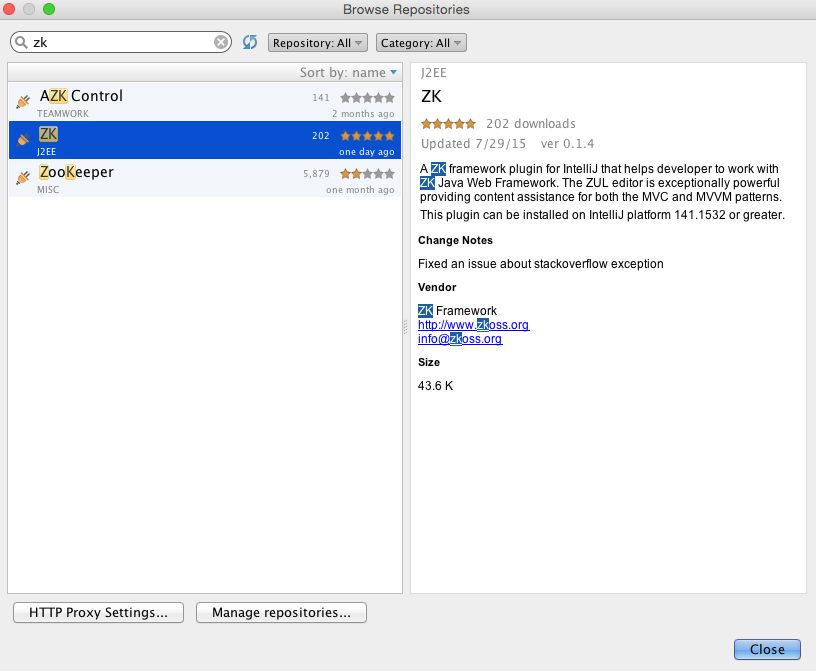
- #Intellij install plugin how to#
- #Intellij install plugin install#
- #Intellij install plugin generator#
- #Intellij install plugin software#
Src/main/kotlin/com/example/Application. This is one of the reasons these plugins nearly always work seamlessly with IntelliJ IDEA. In this class, you will eventually be required to.
#Intellij install plugin install#
Wait for the plugin to download and install Click the grey Restart IntelliJ IDEA button to finalize the installation.

The JetBrains folks also provide a ton of plugins for specific languages and frameworks. In the window that appears, enter 'CS 61B' in the search bar at the top. Invoke the Project view and open the Application.kt file placed by the following path: The current versions of IntelliJ IDEA already provide many plugins bundled with IDE, including Maven, Gradle, Lombok, Docker, and many more. To run the created Ktor application, follow the steps below:

Now we are ready to run the created application. Start typing routing at the top left search box, find Routing in the list, and click Add.Ĭlick Finish and wait until IntelliJ IDEA generates a project and installs the dependencies. On the next page, you can choose a set of plugins (formerly known as features) - building blocks that provide common functionality of a Ktor application, for example, authentication, serialization and content encoding, compression, cookie support, and so on.įor now, let's install only the Routing plugin to handle incoming requests.

In this tutorial, we leave the default values for these settings. Ktor Version: Choose the required Ktor version.Įngine: Select an engine used to run a server.Ĭonfiguration in: Choose whether to specify server parameters in code or in a HOCON file.Īdd sample code: Leave this option enabled to add sample code for plugins added on the next page. Website: Specify a domain used to generate a package name.Īrtifact: This field shows a generated artifact name. This can be Gradle with Kotlin or Groovy DSL, or Maven. Location: Specify a directory for your project.īuild System: Choose the desired build system. On the right pane, you can specify the following settings: In the New Project wizard, choose Ktor from the list on the left. Otherwise, from the main menu, select File | New | Project. On the Welcome screen, click New Project. To create a new Ktor project, open IntelliJ IDEA, and follow the steps below:
#Intellij install plugin generator#
If you are using IntelliJ IDEA Community Edition, use the Ktor Project Generator instead. This section describes project setup using the Ktor plugin for Intellij IDEA Ultimate.
#Intellij install plugin how to#
Learn how to do this from the Manage plugins topic. Install the Ktor pluginīefore starting this tutorial, install the Ktor plugin if you are using IntelliJ IDEA Ultimate. In this guide, we'll show you how to create, run, and test a simple Ktor application. You can create and configure a new Ktor project using a dedicated plugin for IntelliJ IDEA Ultimate, or using a web-based project generator. Confirmation dialog box opens, Install the selected plugin.Ktor is an asynchronous framework for creating microservices, web applications, and more. Right-click the required plugin and select Download and Install.Ĥ. Click Install JetBrains Plugins or Browse Repository Button. We can use this plugin repository by downloading and installing them separately.ġ. They are installed and enabled by default. In IntelliJ IDEA, plugins can be categorized into the following categories: We can enable or disable the checkbox in front of the required plugins.

In this window we can see all the plugins installed in the IDE.As more as plugins installed in the IDE, it reduces the performance of the IDE. More plugins provide more features to our application but it is not good for perfomance. In IntelliJ IDEA, Plugins are the extension to its core functionalities.
#Intellij install plugin software#
A Plugin is a software which adds a specific feature to an existing application program.


 0 kommentar(er)
0 kommentar(er)
